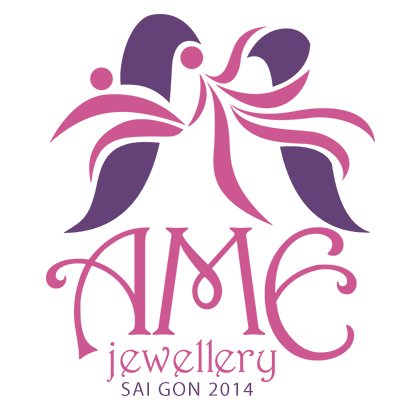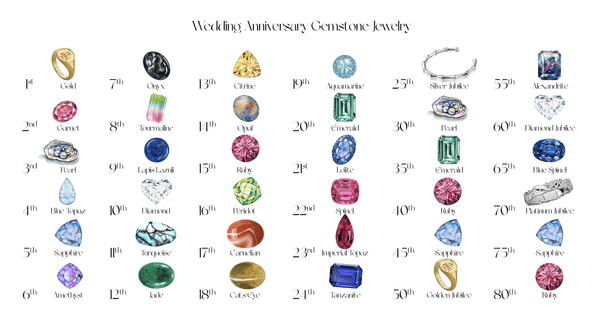Natural Quartz Jewelry
Natural Quartz Jewelry: A Journey Through Crystal and Culture
Natural quartz is one of the most abundant minerals on Earth, making up about 12% of the Earth's crust by volume. It is a crystalline silicon dioxide (SiO₂) form known for its durability, versatility, and beauty.

There are many attractive and well-known quartz varieties. Photo: GIA / Robert Weldon
History & Culture
Quartz has been revered across cultures for millennia. In ancient Egypt, clear quartz was used in jewelry and burial artifacts, believed to hold protective powers. The Greeks called it "krystallos," meaning "ice," thinking it was eternally frozen water, a belief reflected in its modern name, "crystal." Indigenous cultures, like Native American tribes, used quartz in rituals, attributing spiritual significance to its clarity and energy. In medieval Europe, quartz spheres were used for divination (crystal gazing), a practice that persists in some modern esoteric traditions.
1. Crystalline Quartz
Crystalline quartz forms large, visible hexagonal crystals with a distinct structure, yielding varieties renowned for their clarity, geometric precision, and diverse beauty. Notable types include:
Color-Based Varieties
- Clear Quartz: Transparent and colorless, often called "rock crystal," valued for its purity in optics and as a gemstone.
- Milky Quartz: Opaque to translucent white, its cloudiness stems from microscopic fluid or gas inclusions, yet it retains the hexagonal form.
- Amethyst: Prized for its rich purple hue, caused by iron impurities and natural irradiation, a jewelry staple.
- Citrine: Yellow to orange, rare in nature but often created by heat-treating amethyst to enhance its warm tones.
- Prasiolite: A rare green variety, misnamed "green amethyst" in trade, formed when amethyst is heated naturally or artificially, altering its iron-based color.
- Rose Quartz: Soft pink, due to trace titanium or manganese, cherished for its delicate, soothing shade.
- Blue Quartz: Pale to deep blue, colored by inclusions like dumortierite or tourmaline, a scarce and striking variety.
- Smoky Quartz: Brown to black, its color from natural radiation exposure, used decoratively.
- Morion: A near-black, opaque smoky quartz, darkened by intense radiation, less common than lighter shades.
Inclusion-Based Varieties
- Rutile Quartz (Rutilated Quartz): Clear or smoky quartz with needle-like rutile inclusions (titanium dioxide, TiO₂), adding golden or reddish strands that enhance its allure without changing its crystalline core.
- Phantom Quartz: Clear quartz with ghost-like outlines of prior growth stages, marked by inclusions like chlorite or hematite, creating faint internal shapes.
- Aventurine Quartz: Translucent with a subtle sparkle (aventurescence) from inclusions—fuchsite for green, hematite for red-brown, or goethite for yellow-brown—blending crystalline structure with a shimmering effect.
Structural or Optical Varieties
- Herkimer Diamond: Exceptionally clear, double-terminated crystals (pointed at both ends), small yet brilliant, formed in dolomite cavities.
- Sceptre Quartz: A rare formation where a larger crystal crowns a narrower stem, resembling a scepter, often in amethyst or smoky varieties with contrasting colors.
- Cat’s Eye Quartz: A chatoyant variety with a single reflective band from fibrous inclusions (e.g., actinolite), distinct from tiger’s eye’s broader banding.
- Tiger’s Eye: Golden-brown and chatoyant, formed by quartz replacing crocidolite in a pseudomorphic process, preserving a silky, banded texture with a reflective sheen.
Additional rare or regional varieties exist, such as Cairngorm (a Scottish smoky quartz) or Prairie Agate (a Midwest U.S. quartz with inclusions), though the above is the most globally recognized. Quartz’s versatility also allows countless inclusions (e.g., tourmaline, epidote), producing unique specimens still classified as crystalline quartz.
2. Chalcedony (Cryptocrystalline Quartz)
Chalcedony is the microcrystalline counterpart to crystalline quartz, consisting of minute quartz crystals undetectable without magnification. It is prized for its fine-grained texture, waxy luster, and durability—ideal for detailed craftsmanship. Key varieties include:
Color and Appearance-Based Varieties
- Chrysoprase: Vibrant apple-green, colored by nickel impurities, a rare and treasured gem for jewelry.
- Carnelian: Reddish-orange, often translucent, historically favored for seals and signet rings due to its rich hue.
- Bloodstone (Heliotrope): Dark green with distinctive red speckles—iron oxide or hematite inclusions—once used in amulets and carvings, valued for its striking contrast.
- Agate: Banded with colorful, concentric layers, ranging from translucent to opaque, widely used in carvings and ornaments.
- Onyx: Black or black-and-white banded, typically opaque, a classic choice for cameos and intaglios.
- Jasper: Opaque, commonly red, yellow, or brown from iron oxides, popular in decorative arts for its earthy tones.
- Flint: Dense, opaque gray to black, occasionally with a brownish tint, formed in chalk or limestone, historically vital for tools and fire-starting.
Other cryptocrystalline quartz varieties
- Sard: A darker, brownish-red cousin of carnelian, less translucent, used in ancient jewelry.
- Chert: Similar to flint but more varied in color (gray, brown, or white), a sedimentary form often found in nodules.
- Petrified Wood: Fossilized wood replaced by chalcedony, retaining tree-like patterns, prized by collectors.
- Moss Agate: Translucent with moss-like green inclusions (chlorite or iron), distinct from banded agate, used in ornamental pieces.
Chalcedony’s versatility stems from its microcrystalline nature, allowing a smooth, durable surface that enhances both aesthetic and practical applications across cultures.
Gemstone factors
- Mineral: Quartz
- Chemistry: SiO2
- Color: Multi-colors
- Refractive Index: 1.544 to 1.553
- Specific Gravity: 2.66
- Mohs Hardness: 7
Mining Sources
- Brazil: The world’s leading supplier, especially of amethyst, citrine, and clear quartz, mined from pegmatites and geodes in Minas Gerais.
- United States: Arkansas is famous for high-quality clear quartz, while California and the Southwest yield chalcedony varieties like agate and jasper.
- Madagascar: Known for rose quartz and multicolored agates, extracted from volcanic and sedimentary deposits.
- Australia: Rich in opal-related chalcedony and some crystalline quartz, mined in regions like Queensland.
- India: A key source of agate and carnelian, particularly from Gujarat’s ancient riverbeds.
- Russia: The Ural Mountains produce smoky quartz and amethyst, often from metamorphic rock formations.
Mining methods vary: crystalline quartz is often extracted from open-pit or underground mines targeting pegmatites, while chalcedony is commonly collected from surface deposits or alluvial gravels. Industrial quartz for silicon production comes from high-purity deposits, like those in Spruce Pine, North Carolina.
Source:










